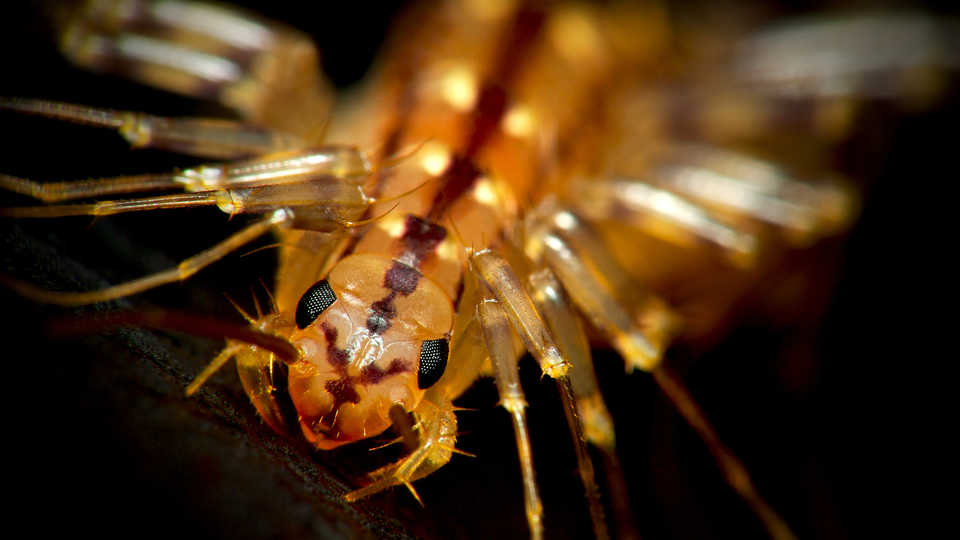Science News
Centipedes!

Centipedes and their millipede brethren are chillingly frightening. Maybe it’s all those legs (not quite 100 or 1,000, but still!). Centipedes are also venomous carnivores and some of their bites can be dangerous, though not fatal, to humans. So no wonder they give us the willies. To be fair, these critters contribute greatly to their ecosystems as invertebrate predators, eating other bugs to keep a balanced habitat.
But sadly, they’re also one of the least studied of the arthropods—until today, not one species of myriapods (as these leggy creatures are called) had their genome described, even though many beetles, butterflies, spiders, flies, and even cockroaches have been sequenced in the past. Finally, the myriapods are getting their due: a group of international scientists (over 100 of them!) published the genome of a blind Scottish centipede today in PLoS Biology.
Why this blind centipede (Strigamia maritima) to start with? While most centipedes live in gardens and woodland, Strigamia lives in coastal habitats, just under the sand. Scientists appreciate the accessibility of their nests, from which embryos can be gathered for study—making the species an ideal candidate for the first genome sequence from a myriapod.
The team found that myriapods likely arose from marine ancestors that invaded the land more than 400 million years ago. “This genome of Strigamia has proved to be particularly valuable in deducing the content of important gene families in the ancestral arthropod, this ancestor then being the starting point for the evolution of the huge diversity of arthropods that we currently see today,” says lead co-author David Ferrier, of the University of St. Andrews.
One of the most surprising findings is that these particular centipedes appear to have lost the genes encoding all of the known light receptors used by animals, as well as the genes controlling circadian rhythm—the body’s internal clock.
“Strigamia live underground and have no eyes, so it is not surprising that many of the genes for light receptors are missing, but they behave as if they are hiding from the light. They must have some alternative way of detecting [light] when they are exposed,” says co-author Michael Akam, of Cambridge University. “It’s curious, too, that this creature appears to have no body clock—or if it does, it must use a system very different to other animals.”
Myriapods’ moment in the spotlight—or some other light—has finally arrived.
Image: the head of Scutigera coleoptrata, Kevincollins123/Wikipedia